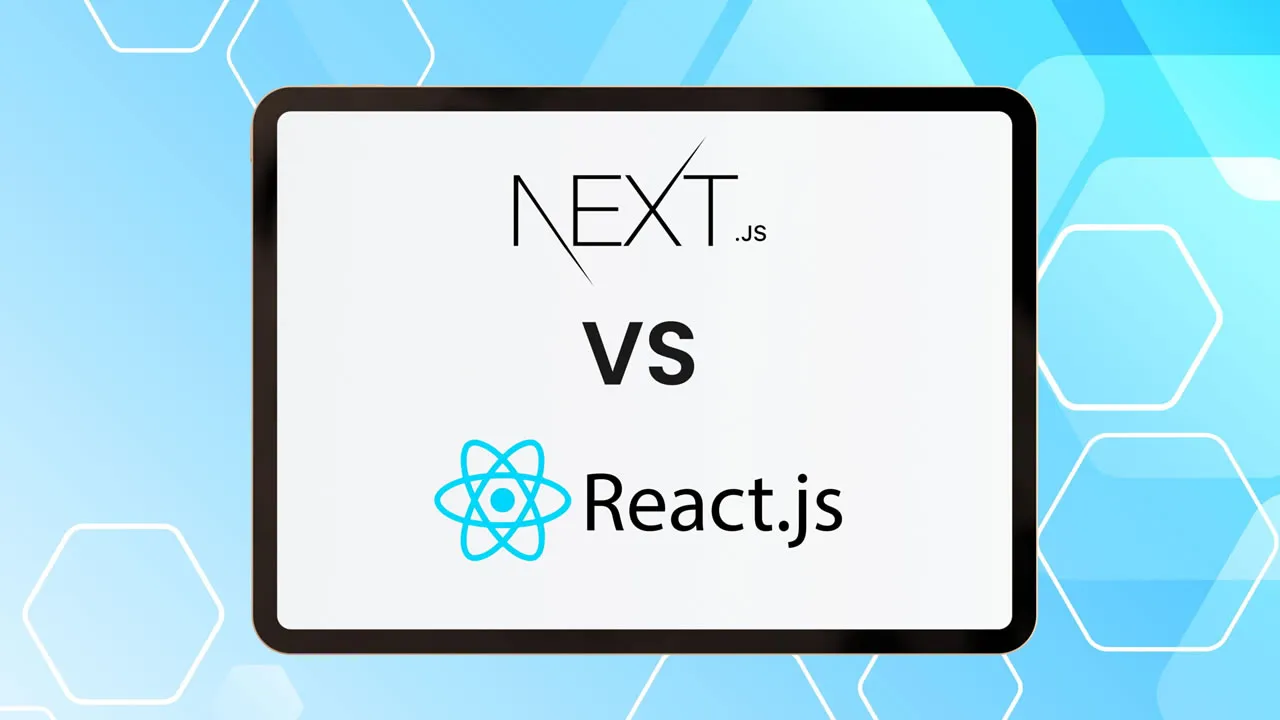
1. The Foundation:
React.js:: React.js, developed and maintained by Facebook, is a JavaScript library for building user interfaces. It focuses on the efficient rendering of UI components in a declarative and component-based manner. React.js has gained immense popularity for its simplicity, flexibility, and the ability to create reusable components.
Next.js: Next.js, an open-source framework built on top of React.js, extends its capabilities by providing a holistic solution for server-side rendering, routing, and other essential features. Developed by Vercel, Next.js simplifies the development process and enhances performance by integrating additional functionalities into the React.js ecosystem.
2. Routing:
React.js: React.js relies on client-side routing, meaning that navigation within the application occurs on the client side without requiring a full-page reload. React Router, a popular library, is often used for handling client-side routing, offering a powerful and flexible solution for navigation.
Next.js Next.js takes a different approach by providing built-in server-side routing. This facilitates automatic route handling, improving SEO performance as pages are rendered on the server before reaching the client. The routing in Next.js is seamless and requires minimal configuration.
3. Server-Side Rendering (SSR):
React.js: React.js primarily employs client-side rendering, where the browser is responsible for rendering components. While this ensures a quick initial load time, it may pose challenges related to search engine optimization (SEO) and performance in certain scenarios.
Next.js: Next.js shines in the realm of server-side rendering. With built-in support for SSR, pages can be rendered on the server before reaching the client, resulting in faster initial page loads and improved SEO. This feature is particularly beneficial for applications that demand enhanced performance and search engine visibility.
4. Deployment and Hosting:
React.js: Deploying a React.js application often requires additional configuration for server environments to handle routing and rendering. Hosting options vary, ranging from traditional web servers to cloud platforms.
Next.js: Next.js simplifies the deployment process, especially when paired with Vercel. Vercel is a platform that specializes in hosting and deploying Next.js applications, providing a seamless experience for developers. The integration between Next.js and Vercel streamlines deployment and enhances the overall development workflow.
5. API Routes:
React.js: In React.js applications, developers commonly rely on external API endpoints for data fetching. This can be achieved using libraries such as Axios or the native Fetch API.
** Next.js**: Next.js introduces a convenient feature known as API routes. These are serverless functions that enable developers to handle API requests directly within the Next.js application. This built-in functionality simplifies the process of managing serverless functions for backend logic.
6. Project Scalability:
React.js: React.js is well-suited for projects of various sizes, from small applications to large-scale enterprise projects. Its flexibility allows developers to choose the tools and libraries that best fit the project's requirements.
Next.js: Next.js excels in projects that demand scalability, particularly those requiring server-side rendering and enhanced performance. It provides a structured approach that supports the growth of applications while maintaining efficiency.
Conclusion: Making an Informed Choice
In conclusion, the choice between React.js and Next.js depends on the specific needs and goals of a project. React.js serves as a powerful library for building user interfaces, offering flexibility and simplicity. On the other hand, Next.js, as a framework built on React.js, extends its capabilities to address challenges related to server-side rendering, routing, and deployment.
Understanding the differences between React.js and Next.js empowers developers to make informed decisions based on project requirements. Whether opting for the versatile simplicity of React.js or the feature-rich environment of Next.js, both technologies play crucial roles in shaping the future of web development. Ultimately, the choice hinges on the specific demands of a project and the desired balance between flexibility and built-in features.
